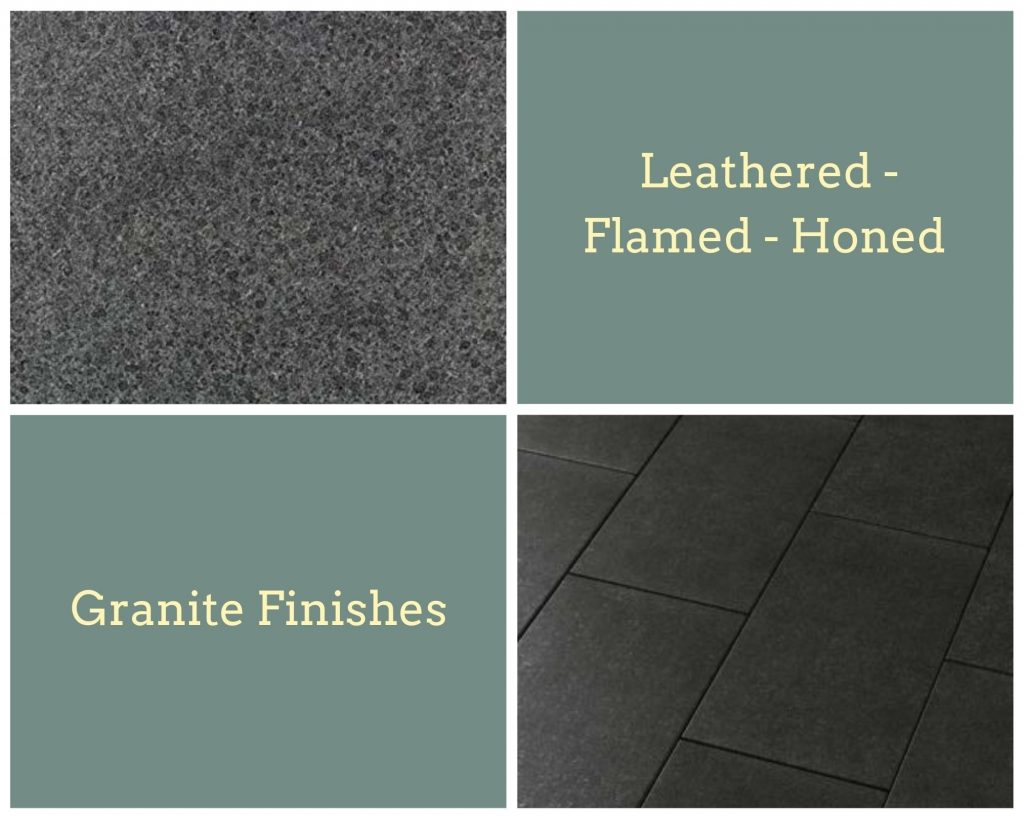Granite has been widely used as a construction material for many years. It is one of the primogenital and most durable materials available and known to upgrade the aesthetics and functionality of the space in which it is installed. Due to its exemplary technical performance and stunning looks, it remains a material of choice for today’s contemporary homes and offices worldwide. Moreover, it comes in a range of finishes that can be chosen given the nature of the application.
In any construction project where an architect wants to bring in richness and a deep sense of exquisiteness, granite comes as the foremost option. The beauty of granite is timeless and this is what makes it the most preferred material for a wide range of construction applications. Be it a residential project or a commercial one, the application of granite stone means high durability and low maintenance.
One of the most remarkable things about granite is its uniqueness. No two granite slabs will be ever precisely the same, even extracted from the same quarry. As it is comprised of various types of minerals, the color variation of a granite slab predominantly depends on the presence of minerals in it. General light-hued igneous rocks called granite include granodiorite and syenite. On the other hand, dark-color igneous rocks including black granite are made up of basalt, gabbro diabase, anorthosite, and diorite.

While granite offers you several options in terms of color and style, this natural stone comes in different types of finishes that are also a big advantage for buyers. The four most popular finishes for granite countertops are honed, polished, flamed, and leathered. Here is a guide that will cover all these finished in detail and how each finish influences the looks and functionality of the space.
Popular granite surface finishes and their respective applications
Polished Finish
This is the most commonly applied finish on a granite surface. The fundamental idea behind applying this finish is to reveal the stone’s natural beauty and add elegance to any space. A polished finish granite surface mimics mirror-like shine that tends to resonate luster and stun onlookers. This finish is known for revealing the true color and charm of the granite.
Polished finished is much like an inherent part of stone processing and is done on almost all countertop surfaces to make it smoother. Similarly, this finish is pretty much common in floorings too.
At stone processing facilities, polish is done through a grinding and buffing process that is meant to give the stone surface a glossy, slippery finish. The stone slab passes through a range of polishing wheels with attached abrasive pads.

These pads are used to apply pressure on the stone, grinding and buffing polishing the stone surface. The pad intensity is measured in grits and starts at 50 grit, and reaching up to 3,000 grit to attain the desired gloss.
Applications – Countertops, Flooring
Honed Finish
A honed finish granite exhibits a satin buffed or matte look. This type of surface finish contains lesser replication and shine as compared to the polished finish, thus lending a laxer look. A honed finish stone can induce a calm, off-the-cuff appeal while upkeeping the class and character of the graceful stone. This finish will not reveal the hue and consistency of the granite as well as the polished finish. For those searching for a bit subdued look, honed granite for countertops or backsplashes is a wonderful choice.
For countertops, this surface finish is quite popular as it results in a smoother and workable finish. Another benefit associated with a honed finish is its capability to hide flaws better than other finishes due to being less reflective.
Similarly, a honed surface is apt for flooring as it is less slippery and reveals traces of wearing or traffic patterns. In terms of moisture retention, a honed finish is less effective than a polished finish.
Applications – Countertops, Flooring

Leathered Finish
In comparison to other granite surface finishes, this is relatively new and rapidly gaining popularity in the décor industry. It boasts a subtle gloss lesser than polished one and includes a textured look. The texture will differ from piece to piece and some natural stones will have a more distinct leather finish than others.
This kind of surface finish is found to lend a warm and rustic appeal to the stone surface. Although the leathered finish is not as glossy as polished, it usually has more depth than a honed finish. Mostly, a leathered finish stone exhibit more resistance to stains, scratches, fingerprints, and smudges.
This finish is achieved by first removing the polished finish followed by grinding the surface with leathering brushes that put heavy pressure on the surface. These brushes make small ripples in the surface that lead to the leathered finish.

Polished, Honed, and Leathered are primarily residential finishes, but several other finishes are widely prevalent in the commercial sector.
Preferred Applications – Bar tops, Bathrooms, Fireplace covers, and Custom-designed tables
Flamed Finish
This finish is characterized by a bit bumpy stone surface. The finishing process also alleviates the stone finish to some shades, leading to a more faded, rustic, and lighter look.
As its name indicates, this finish is achieved by exposing a high-intensity flame to the stone surface, which causes the surface to spurt and become coarse. It is an ideal finish for outdoor applications where a non-slip surface is required.
Ideal Applications – Outdoor kitchen, Exterior walls, and Paving

Bush Hammered Finish
This finish is achieved by hammering the stone with multiple steel brushes that tend to break the surface and cause pits. Alike the flamed finish mentioned above, bush-hammering is a process for preparing extremely slip-resistant surfaces. It can also be utilized to reconstruct the look of a primitive polish when the stone was used to be hand-chiseled. Eventually, gentle brushing using steel brushes is done to give the surface a “time-worn” look.
Applications – Outdoor applications, Flooring, paving, and Swimming pools

Brushed Finish
Brushed finish granite is created by brushing its surface gently until it becomes textured. Due to the application of brushing, granite stones with this finish become more porous as compared to polished granite. Similar to a honed finish, a brushed finish attenuates the color of the granite.
A brushed finish granite carries the power to conceal imperfections and scratches, which are quite common during usage.
Applications – Outdoors, vanities, countertops

Lepatora Finish
The term ‘Lepatora is known to have its origin in Italy. To yield Lepatora finish, the granite surface is first grinded by using an abrasive to remove the polish. Then, scratches on the stone are removed by using other stone abrasives. Then, different stone brushes of numbers 26, 60, 80, 120, 240, 320, and 500 are used in the leather finish. After this, three more special stones of numbers 800, 1500, and 3000 are used to attain an eventual stone finish which is a mix of muted and gloss, and less shiny. Lepatora finish granite features a granular worn-out but extremely stylish look. The surface is non-slippery and quick to clean.
Applications – Countertops, Steps, Vanities, and Outdoor applications

